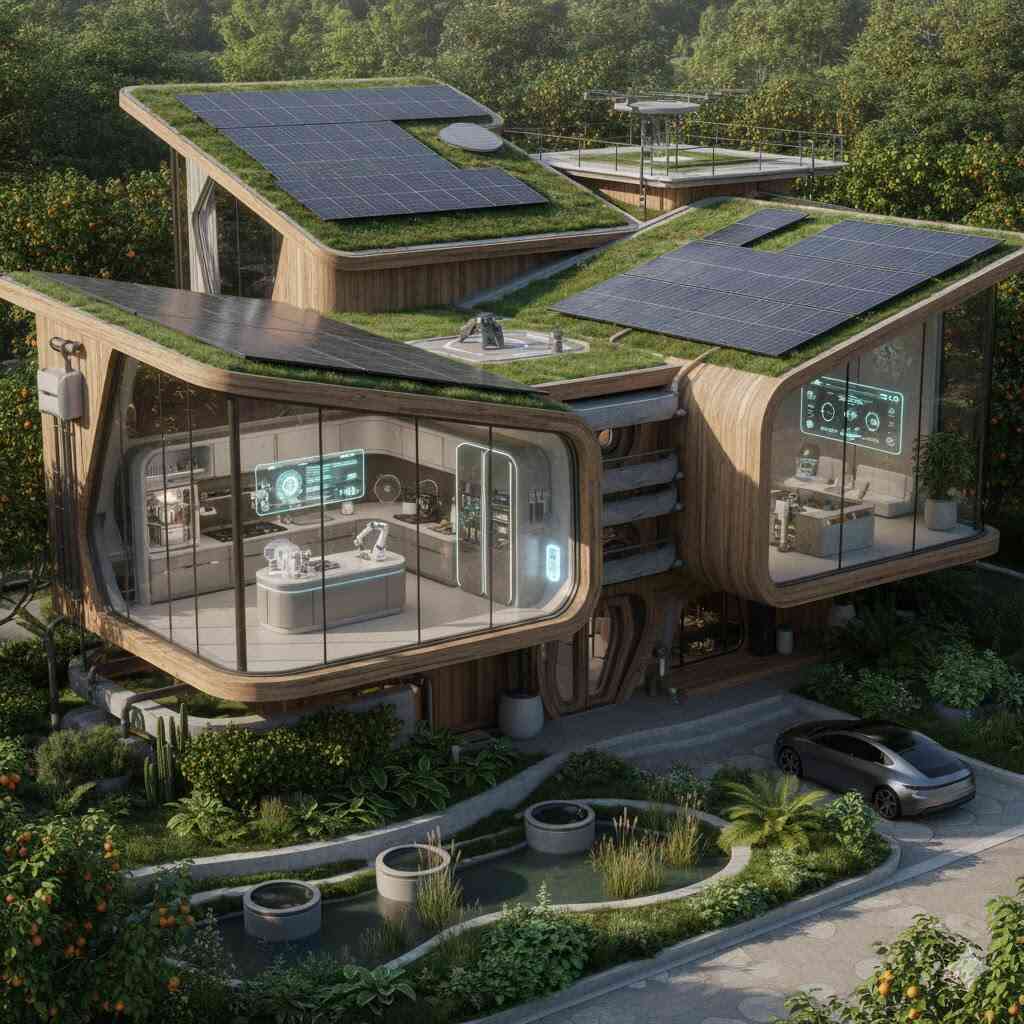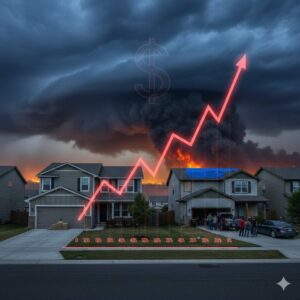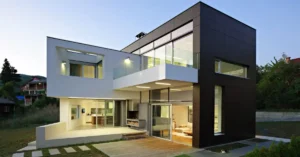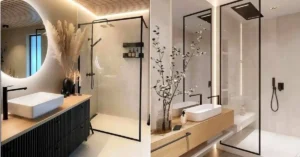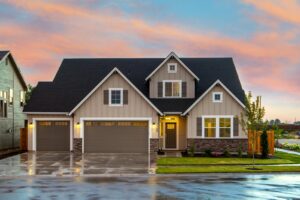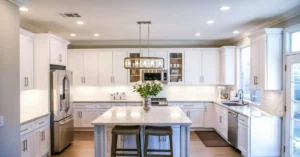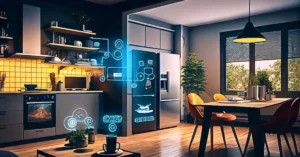The rise of smart living properties marks a major shift in how Americans design, buy, and manage their homes. In 2025, the integration of AI-driven automation, sustainable materials, and connected home technologies is transforming properties into hubs of comfort, efficiency, and environmental consciousness.
As the U.S. housing market continues to evolve through digital transformation and eco-focused design, smart living properties are redefining what it means to own a modern, sustainable home. They represent the merging of convenience with conscience where innovation meets responsibility in the pursuit of better living.
What Are Smart Living Properties?
Smart living properties are homes or residential buildings that combine advanced technology and sustainable design principles to create intelligent, efficient, and eco-friendly environments. They integrate automation systems, connected devices, and real-time data analytics to optimize how homeowners interact with their spaces, improving comfort while reducing environmental impact.
From learning thermostats that anticipate occupant preferences to automated lighting and security systems controlled by smartphone or voice command, these homes deliver a seamless blend of convenience, control, and conservation.
According to CNBC, the global smart home market is expected to exceed $170 billion by the end of 2025, with growing adoption driven by rising energy costs, sustainability concerns, and increased consumer demand for connected technologies.
Smart living is no longer just about luxury, it’s becoming a standard feature of modern living, aligning with the U.S. push toward greener, tech-integrated communities.
Key Features of Smart Living Properties
Energy Efficiency and Automation
Energy efficiency is at the core of every smart living property. Homes today are equipped with connected HVAC systems, intelligent lighting, and real-time power usage monitoring.
By analyzing daily consumption patterns, these systems automatically adjust heating, cooling, and lighting to optimize performance while reducing waste. This dynamic control can lower household energy use by up to 30%, according to Energy.gov.
Such automation not only cuts utility costs but also supports broader carbon reduction initiatives, helping the U.S. achieve its 2030 sustainability goals.
Integrated Home Management
Homeowners in 2025 expect simplified control and integrated home management delivers just that. Platforms such as Google Home, Apple HomeKit, and Amazon Alexa allow users to oversee every part of their property: from smart locks and blinds to kitchen appliances and irrigation systems.
This level of integration boosts security, streamlines maintenance, and ensures personalized comfort. AI-powered assistants even provide reminders for maintenance tasks, such as replacing filters or scheduling system checks further enhancing efficiency.
According to Reuters, integration across devices is now a key selling point in new real estate developments, with builders prioritizing interoperability and remote monitoring in home design.
Sustainable Design and Construction
In 2025, sustainability has become more than a trend it’s a requirement for future housing. Smart living properties increasingly feature eco-friendly building materials, solar panels, rainwater harvesting systems, and efficient insulation designed to reduce energy consumption.
Many developers now aim for net-zero energy buildings, meaning a home produces as much energy as it consumes annually. Some communities are even adopting microgrid solar systems, allowing residents to generate and share renewable power.
As Bloomberg Green notes, sustainable design and renewable integration have become standard in U.S. housing developments, with green construction projected to grow 20% year-over-year.
Smart Security and Health Features
Security remains a top priority for homeowners and smart security systems have evolved significantly. Homes today employ AI-enabled facial recognition cameras, motion sensors, and automated alarm systems that notify homeowners of unusual activity in real-time.
Beyond security, these properties integrate health-focused technology, such as indoor air quality monitors, smart water filters, and humidity sensors, to ensure safer, cleaner living conditions.
As climate events and pollution levels rise, these built-in safety and health features are becoming indispensable for modern households.
Data-Driven Personalization
The power of data and artificial intelligence allows smart homes to learn and adapt continuously. From lighting that mimics natural circadian rhythms to temperature control based on occupancy, every aspect of the home evolves with the user’s behavior.
Imagine waking up to gradually brightening lights, pre-warmed floors, and brewed coffee all automated based on your daily routine. This level of personalized automation transforms convenience into a lifestyle standard rather than a luxury.
The more residents engage with these systems, the smarter and more energy-efficient their homes become over time.
Benefits of Smart Living Properties
- Reduced Energy Costs: Automation optimizes heating, lighting, and appliances cutting waste and saving on bills.
- Enhanced Security: Advanced monitoring and AI detection offer continuous protection.
- Sustainability: Renewable energy systems and green materials lower environmental impact.
- Convenience: Voice and mobile controls streamline daily routines.
- Increased Property Value: Tech-enhanced homes sell faster and command higher resale prices.
As real estate platforms like Zillow and Redfin report, buyers in 2025 increasingly prioritize smart technology with listings highlighting sustainability and automation outperforming traditional homes in sales speed and price per square foot.
Challenges in Adopting Smart Living Properties
Despite the progress, there are hurdles that must be addressed before smart living becomes universal.
- High Initial Costs: Installation of automation systems and renewable technologies increases upfront investment. However, falling hardware prices and government incentives are helping offset these costs.
- Data Privacy Risks: As more devices connect to the internet, cybersecurity threats remain a concern. Developers and homeowners alike must ensure encryption and regular software updates.
- Maintenance Requirements: Like any tech system, smart homes require ongoing updates, calibration, and occasional hardware replacements to remain effective.
Nevertheless, as AI integration and IoT security improve, these challenges are gradually being resolved paving the way for mass adoption across urban and suburban communities.
The Future of Smart Living in 2025 and Beyond
The next evolution of smart living extends far beyond individual homes. Entire neighborhoods are transitioning into intelligent ecosystems, featuring community solar grids, shared energy storage, and AI-managed waste systems.
Urban planners are also exploring biophilic design, integrating natural materials and green spaces directly into residential architecture to improve mental and physical wellbeing.
In the near future, connected communities will share resources, data, and energy, reducing costs and carbon output collectively. The home of 2030 could be entirely self-sustaining, with homes that communicate with city grids, adjust to weather patterns, and even predict maintenance before problems arise.
As technology and sustainability continue to merge, the American home will become more intelligent, eco-conscious, and resilient, reflecting both innovation and responsibility.

